Evolutionary game theory
Classical non-cooperative game theory was conceived by John von Neumann to determine optimal strategies in competitions between adversaries.
The leading ethologists Niko Tinbergen and Konrad Lorenz proposed that such behaviour exists for the benefit of the species.
John Maynard Smith considered that incompatible with Darwinian thought,[7] where selection occurs at an individual level, so self-interest is rewarded while seeking the common good is not.
[8] Maynard Smith realised that an evolutionary version of game theory does not require players to act rationally—only that they have a strategy.
In biology, strategies are genetically inherited traits that control an individual's action, analogous with computer programs.
Representative games include hawk-dove,[1] war of attrition,[17] stag hunt, producer-scrounger, tragedy of the commons, and prisoner's dilemma.
The result does not at all depend on "good of the species" behaviours as suggested by Lorenz, but solely on the implication of actions of so-called selfish genes.
If an unshareable resource is combined with a high cost of losing a contest (injury or possible death) both hawk and dove payoffs are further diminished.
[19] The distribution function in these contests was determined by Parker and Thompson to be: The result is that the cumulative population of quitters for any particular cost m in this "mixed strategy" solution is: as shown in the adjacent graph.
Games like hawk dove and war of attrition represent pure competition between individuals and have no attendant social elements.
[26] Most eusocial insect societies have haplodiploid sexual determination, which means that workers are unusually closely related.
[27] This explanation of insect eusociality has, however, been challenged by a few highly-noted evolutionary game theorists (Nowak and Wilson)[28] who have published a controversial alternative game theoretic explanation based on a sequential development and group selection effects proposed for these insect species.
But universal selection at the group level (for the good of the species, not the individual) fails to pass the test of the mathematics of game theory and is certainly not the general case in nature.
The strategy employed is tit-for-tat which alters behaviours based on the action taken by a partner in the previous round – i.e. reward co-operation and punish defection.
Altruism strategies can arise through: It has been argued that human behaviours in establishing moral systems as well as the expending of significant energies in human society for tracking individual reputations is a direct effect of societies' reliance on strategies of indirect reciprocation.
[35] Organisms that use social score are termed Discriminators, and require a higher level of cognition than strategies of simple direct reciprocity.
The evolutionarily stable strategy (ESS) is akin to the Nash equilibrium in classical game theory, but with mathematically extended criteria.
Rock paper scissors incorporated into an evolutionary game has been used for modelling natural processes in the study of ecology.
[43] Using experimental economics methods, scientists have used RPS games to test human social evolutionary dynamical behaviours in laboratories.
[44][45] The first example of RPS in nature was seen in the behaviours and throat colours of a small lizard of western North America.
[53] Aside from the difficulty of explaining how altruism exists in many evolved organisms, Darwin was also bothered by a second conundrum – why a significant number of species have phenotypical attributes that are patently disadvantageous to them with respect to their survival – and should by the process of natural section be selected against – e.g. the massive inconvenient feather structure found in a peacock's tail.
Regarding this issue Darwin wrote to a colleague "The sight of a feather in a peacock's tail, whenever I gaze at it, makes me sick.
Game theory was originally conceived as a mathematical analysis of economic processes and indeed this is why it has proven so useful in explaining so many biological behaviours.
One important further refinement of the evolutionary game theory model that has economic overtones rests on the analysis of costs.
[60] Carl Bergstrom and Michael Lachmann apply evolutionary game theory to the division of benefits in mutualistic interactions between organisms.
Darwinian assumptions about fitness are modeled using replicator dynamics to show that the organism evolving at a slower rate in a mutualistic relationship gains a disproportionately high share of the benefits or payoffs.
[61] A mathematical model analysing the behaviour of a system needs initially to be as simple as possible to aid in developing a base understanding the fundamentals, or “first order effects”, pertaining to what is being studied.
This model is useful in showing how pockets of co-operators can invade and introduce altruism in the Prisoners Dilemma game,[62] where Tit for Tat (TFT) is a Nash Equilibrium but NOT also an ESS.
Alternatively, agents might have access to an arbitrary signal initially uncorrelated to strategy but becomes correlated due to evolutionary dynamics.
[66] From molecular to multicellular level, a signaling game model with information asymmetry between sender and receiver might be appropriate, such as in mate attraction[56] or evolution of translation machinery from RNA strings.


1) The model (as evolution itself) deals with a population (Pn). The population will exhibit variation among competing individuals. In the model this competition is represented by the game.
2) The game tests the strategies of the individuals under the rules of the game. These rules produce different payoffs – in units of fitness (the production rate of offspring). The contesting individuals meet in pairwise contests with others, normally in a highly mixed distribution of the population. The mix of strategies in the population affects the payoff results by altering the odds that any individual may meet up in contests with various strategies. The individuals leave the game pairwise contest with a resulting fitness determined by the contest outcome, represented in a payoff matrix .
3) Based on this resulting fitness each member of the population then undergoes replication or culling determined by the exact mathematics of the replicator dynamics process . This overall process then produces a new generation P(n+1). Each surviving individual now has a new fitness level determined by the game result.
4) The new generation then takes the place of the previous one and the cycle repeats. The population mix may converge to an evolutionarily stable state that cannot be invaded by any mutant strategy.


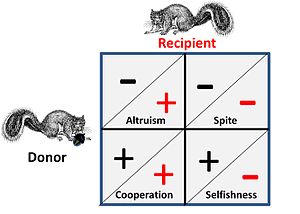

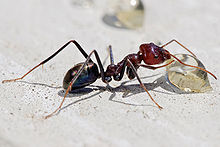

Prisoner's dilemma: co-operate or defect
Payoff (temptation in defecting vs. co-operation) > Payoff (mutual co-operation) > Payoff (joint defection) > Payoff (sucker co-operates but opponent defects)
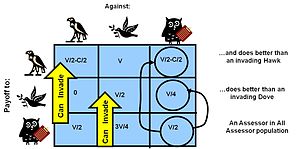




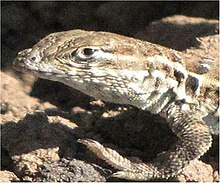
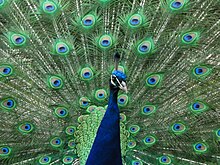

In a spatial evolutionary game contestants meet in contests at fixed grid positions and only interact with immediate neighbors. Shown here are the dynamics of a Hawk Dove contest, showing Hawk and Dove contestants as well as the changes of strategy taking place in the various cells